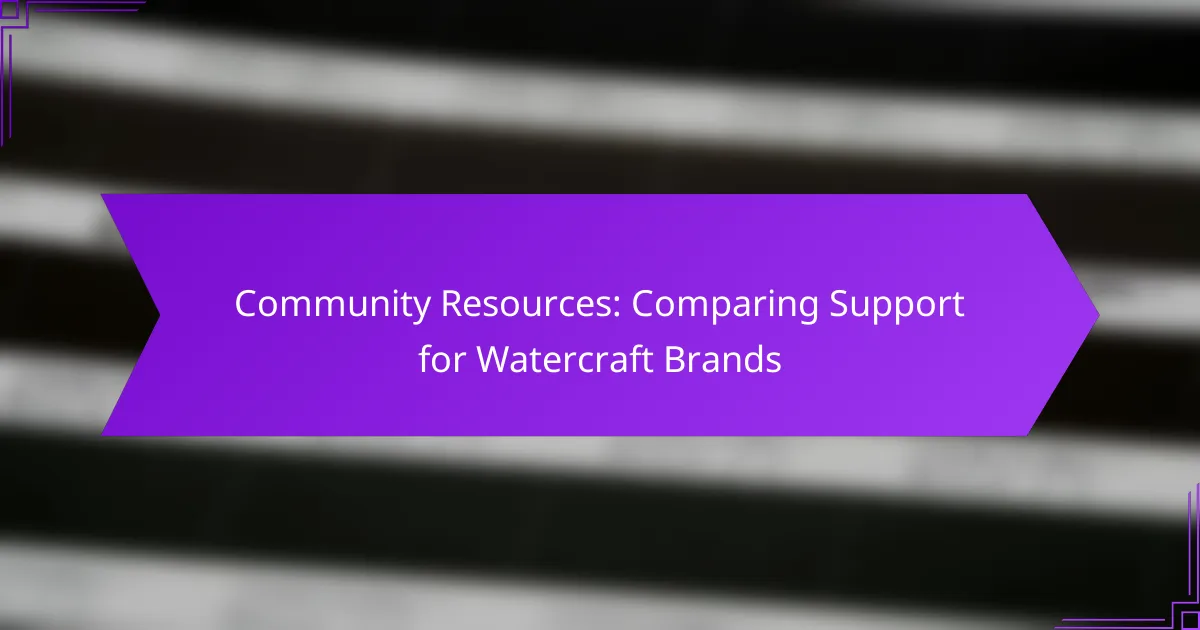Cannonball 8000 aims to strengthen its ties with the Los Angeles community through strategic initiatives such as organizing events, leveraging social media, and collaborating with local organizations. By fostering connections and encouraging active participation, the brand enhances its visibility and resonance among residents. Additionally, measuring community engagement through surveys and analytics helps refine these efforts and ensure meaningful interactions.
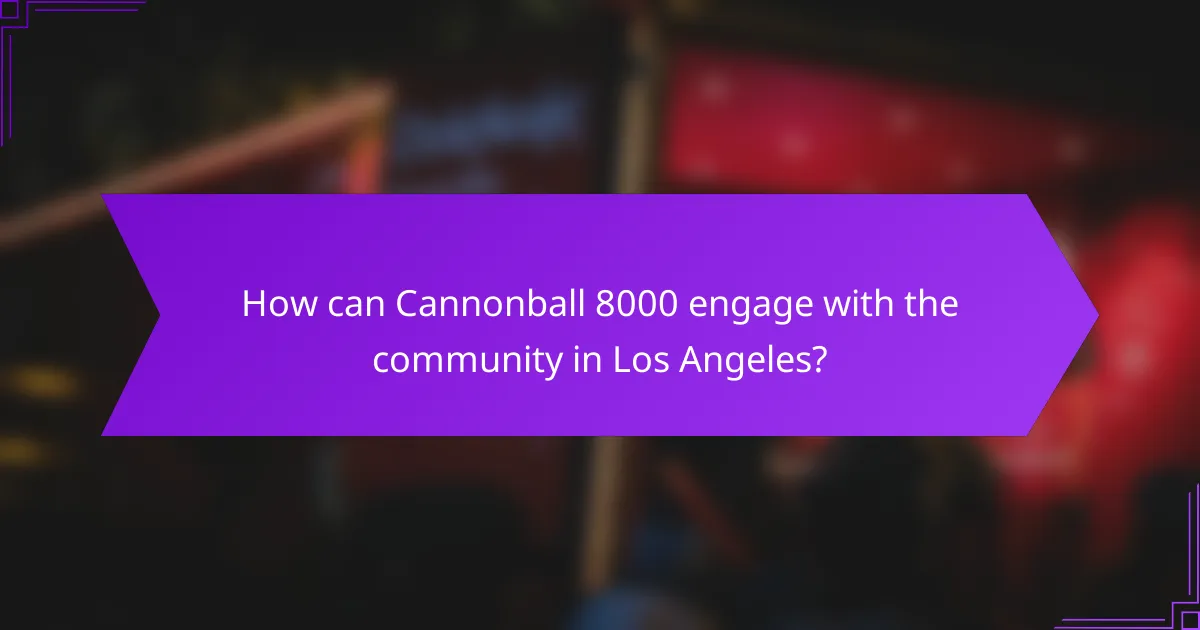
How can Cannonball 8000 engage with the community in Los Angeles?
Cannonball 8000 can effectively engage with the Los Angeles community by organizing events, leveraging social media, and forming partnerships with local organizations. These strategies foster connections and enhance visibility, ensuring that the brand resonates with local residents.
Community events and workshops
Hosting community events and workshops allows Cannonball 8000 to interact directly with residents. These gatherings can include product demonstrations, educational sessions, or fun activities that promote engagement and learning.
Consider organizing events in popular local venues or parks to attract a larger audience. Providing refreshments or incentives, such as giveaways, can further encourage participation.
Social media outreach
Utilizing social media platforms is essential for Cannonball 8000 to connect with the Los Angeles community. Regular updates, engaging content, and interactive posts can help build a loyal following.
Focus on platforms popular in the area, such as Instagram and Facebook, to share event details, customer stories, and behind-the-scenes content. Encourage followers to share their experiences to amplify reach and engagement.
Partnerships with local organizations
Forming partnerships with local organizations can enhance Cannonball 8000’s community presence. Collaborating with schools, non-profits, or local businesses can create mutually beneficial opportunities.
Consider co-hosting events or sponsoring community initiatives to demonstrate commitment to local causes. This not only boosts visibility but also builds trust and goodwill within the community.
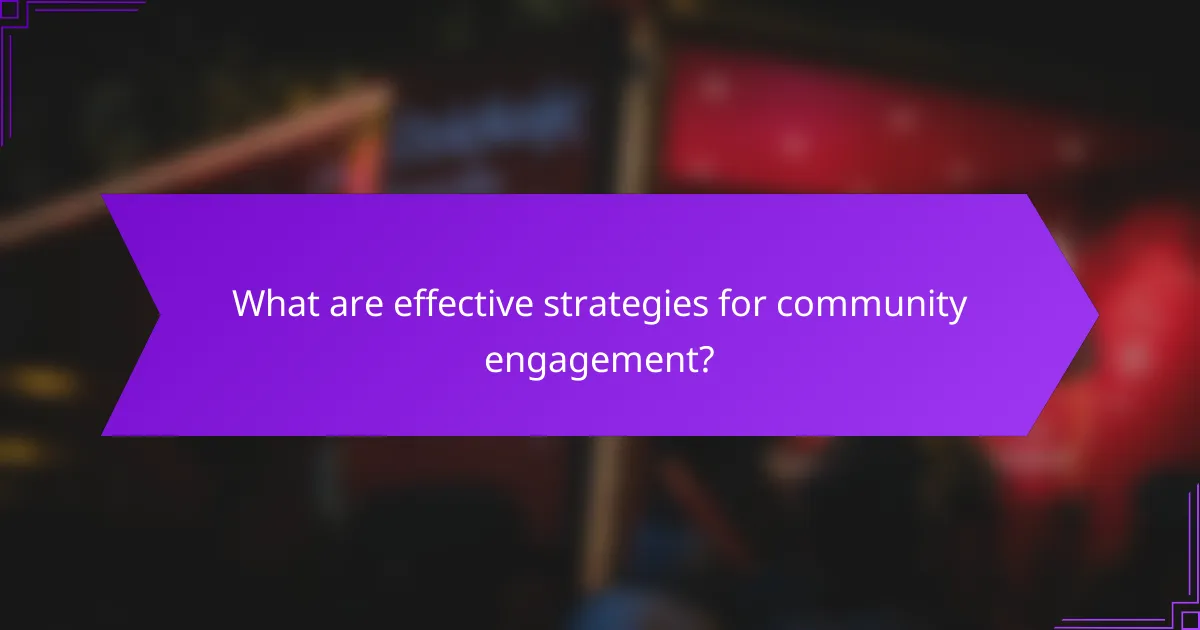
What are effective strategies for community engagement?
Effective community engagement strategies foster strong relationships and encourage active participation. Key approaches include utilizing feedback loops, creating interactive content, and hosting local meetups to build connections and gather insights.
Utilizing feedback loops
Feedback loops are essential for understanding community needs and preferences. By regularly soliciting input through surveys, polls, or direct conversations, organizations can adapt their offerings to better serve their audience.
Consider implementing a system where community members can easily share their thoughts and suggestions. For instance, using online platforms or social media can facilitate real-time feedback, allowing for quick adjustments and improvements.
Creating interactive content
Interactive content engages community members and encourages participation. This can include quizzes, polls, or discussion forums that invite users to share their opinions and experiences.
For example, hosting a monthly challenge related to your community’s interests can spark excitement and involvement. Ensure that the content is relevant and accessible to encourage maximum participation.
Hosting local meetups
Local meetups provide opportunities for face-to-face interaction and relationship building. Organizing events such as workshops, networking sessions, or casual gatherings can strengthen community ties.
To maximize attendance, consider scheduling meetups at convenient times and locations. Offering refreshments or incentives, like giveaways, can also enhance participation and create a welcoming atmosphere.

How does Cannonball 8000 measure community engagement?
Cannonball 8000 measures community engagement through various methods that provide insights into participant interactions and satisfaction. These methods include surveys, social media analytics, and tracking attendance at events, each offering unique data points to assess community involvement.
Surveys and polls
Surveys and polls are direct tools for gathering feedback from community members. They can be distributed online or in-person, allowing participants to express their opinions on events, initiatives, and overall satisfaction. Effective surveys typically include a mix of multiple-choice questions and open-ended responses to capture a range of insights.
To maximize response rates, consider incentivizing participation with small rewards or ensuring anonymity. Aim for completion rates of at least 20-30% to ensure the data is representative of the community’s views.
Social media analytics
Social media analytics involve tracking engagement metrics across platforms like Facebook, Twitter, and Instagram. Key metrics include likes, shares, comments, and follower growth, which indicate how well the community is interacting with content. Tools like Google Analytics and native platform insights can help quantify this engagement.
Regularly reviewing these metrics can reveal trends over time, such as which types of posts generate the most interaction. This information can guide future content strategies to better resonate with the community.
Event attendance tracking
Tracking event attendance is crucial for understanding community engagement during organized activities. This can be done through ticket sales, registration forms, or check-in systems at events. High attendance rates typically indicate strong community interest and involvement.
To enhance tracking, consider using digital tools that allow for real-time data collection and analysis. Comparing attendance figures across different events can help identify which activities are most appealing to the community, guiding future planning efforts.
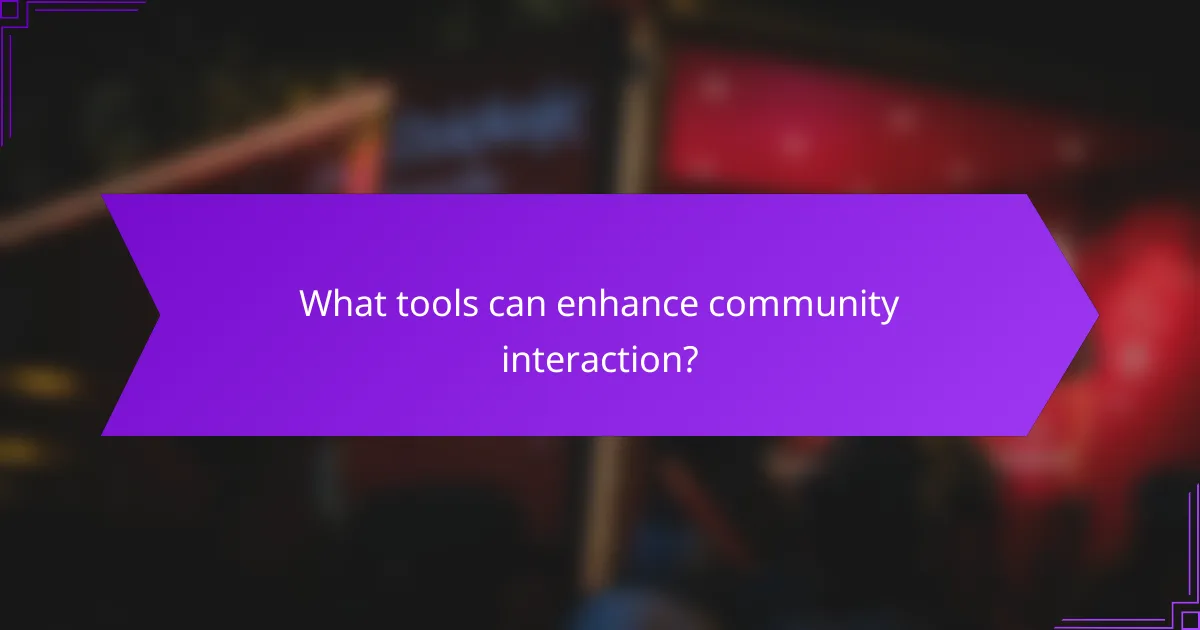
What tools can enhance community interaction?
Effective community interaction can be significantly improved with the right tools. Utilizing specialized platforms can streamline communication, foster engagement, and help manage events efficiently.
Community management platforms
Community management platforms are essential for organizing and engaging with members. These tools allow for centralized communication, content sharing, and member management, making it easier to foster a sense of belonging.
Popular options include platforms like Discord, Slack, and Facebook Groups, which offer various features tailored to different community needs. When selecting a platform, consider factors such as user interface, integration capabilities, and the specific needs of your community.
Event planning software
Event planning software helps organize community events, whether online or in-person. These tools can manage registrations, send reminders, and facilitate communication before, during, and after events.
Examples include Eventbrite and Meetup, which allow for easy event creation and promotion. When choosing software, look for features like ticketing options, calendar integration, and analytics to evaluate event success.
Social media management tools
Social media management tools enhance community interaction by scheduling posts, monitoring engagement, and analyzing performance across various platforms. These tools help maintain a consistent online presence and engage with members effectively.
Tools like Hootsuite and Buffer allow you to manage multiple accounts from one dashboard, making it easier to respond to community feedback and share relevant content. Prioritize tools that offer analytics to track engagement metrics and adjust your strategy accordingly.
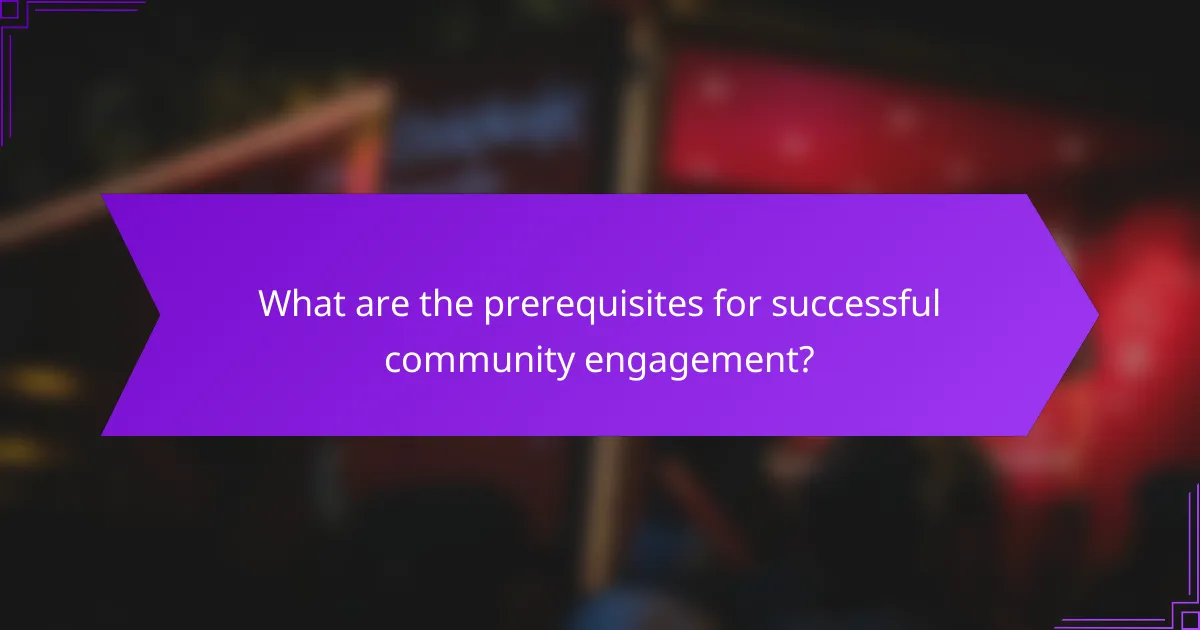
What are the prerequisites for successful community engagement?
Successful community engagement requires a clear understanding of your audience and well-defined goals. These prerequisites ensure that your efforts are targeted and effective, fostering meaningful interactions and relationships.
Understanding target audience
To engage effectively, you must first identify and understand your target audience. This involves researching demographics, interests, and behaviors to tailor your approach. Consider factors such as age, location, and preferences, which can significantly influence how your community interacts.
Utilizing surveys, social media analytics, and direct feedback can provide valuable insights into your audience’s needs and expectations. This information helps in crafting messages and initiatives that resonate with them, increasing the likelihood of participation and engagement.
Defining engagement goals
Clearly defined engagement goals are essential for guiding your community initiatives. These goals should be specific, measurable, achievable, relevant, and time-bound (SMART). For instance, you might aim to increase participation in events by a certain percentage within a set timeframe.
Establishing goals not only provides direction but also allows you to assess the effectiveness of your engagement strategies. Regularly review and adjust these goals based on community feedback and participation metrics to ensure they remain aligned with your audience’s evolving interests.
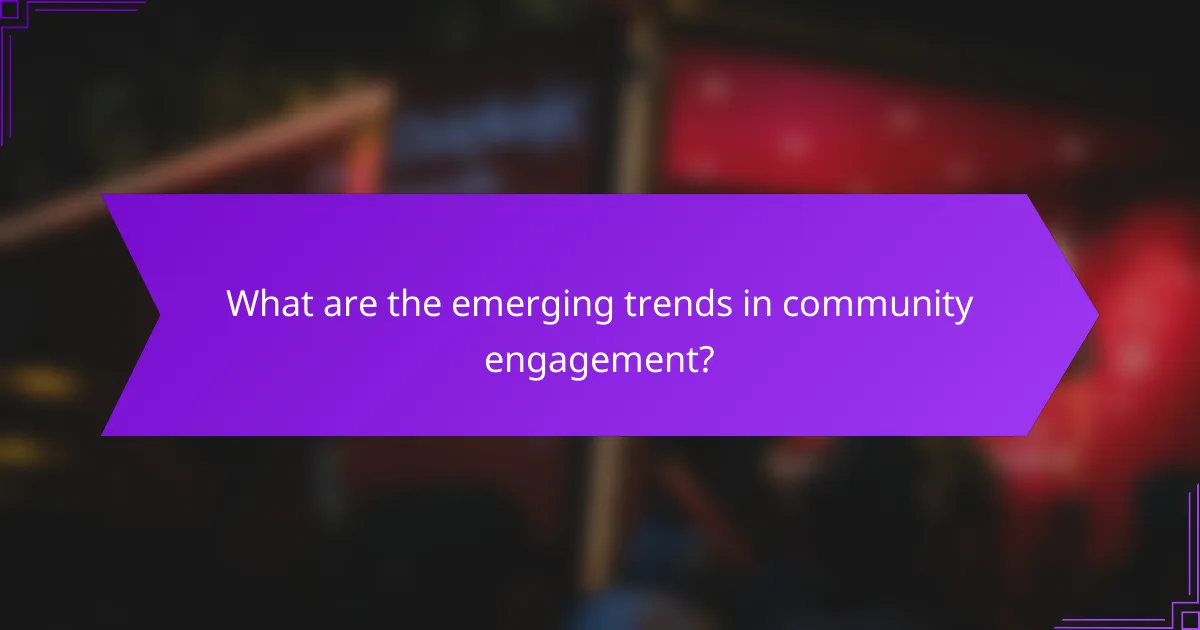
What are the emerging trends in community engagement?
Emerging trends in community engagement focus on leveraging technology and fostering inclusivity to enhance participation. These trends emphasize the importance of real-time communication, personalized experiences, and the integration of diverse voices to create a more vibrant community.
Increased Use of Digital Platforms
Digital platforms are becoming essential for community engagement, allowing organizations to reach a wider audience. Social media, forums, and dedicated apps enable real-time interaction, making it easier for members to share ideas and feedback.
For effective engagement, consider utilizing popular platforms like Facebook, Twitter, and Instagram, which can facilitate discussions and promote events. Regular updates and interactive content can keep community members informed and involved.
Focus on Inclusivity and Diversity
Inclusivity and diversity are critical in community engagement, ensuring that all voices are heard and valued. Engaging underrepresented groups can lead to richer discussions and innovative solutions.
To promote inclusivity, organizations should actively seek input from diverse demographics and create spaces where everyone feels comfortable participating. This might include hosting events in various languages or providing resources that cater to different cultural backgrounds.
Data-Driven Decision Making
Data-driven decision making is increasingly important in shaping community engagement strategies. By analyzing participation metrics and feedback, organizations can tailor their approaches to better meet the needs of their members.
Utilizing tools like surveys and analytics can help identify trends and areas for improvement. Regularly reviewing this data allows for adjustments in engagement tactics, ensuring they remain effective and relevant.
Emphasis on Community-Centric Initiatives
Community-centric initiatives prioritize the needs and interests of members, fostering a sense of ownership and belonging. These initiatives often involve collaborative projects that encourage participation and investment from community members.
Examples include local clean-up days, community gardens, or skill-sharing workshops. These activities not only enhance engagement but also strengthen relationships among members, creating a more cohesive community.



